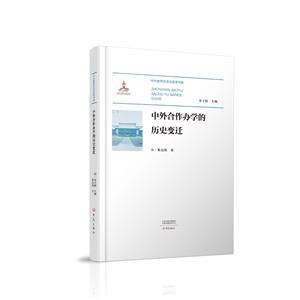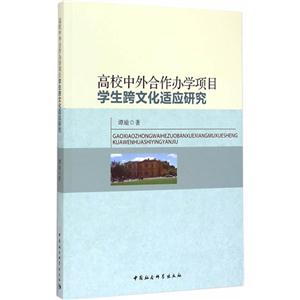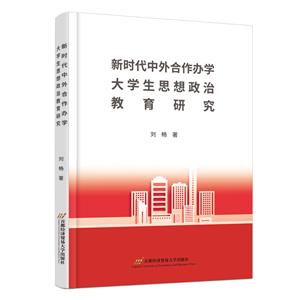
作者:韩剑侠
页数:195
出版社:上海交通大学出版社
出版日期:2014
ISBN:9787313114037
电子书格式:pdf/epub/txt
内容简介
采用国外教学大纲、教材及评估体系的中外合作办学项目成为国内高校办学模式的亮点。该模式采取全英语的教学模式,但国内对中外合作办学项目的效果等却鲜有探讨。本书稿主要通过实证研究介绍了中外合作办学条件下全英语教学模式的教学效果以及学生英语初始水平在该教学模式的作用。本书读者对象主要为高校对双语教学感兴趣的学科教师、语言教师等。
本书特色
韩剑侠所著的《学生英语水平与中外合作办学成效研究(英文版)》以吉姆·卡明斯(jimcummins)的共同潜在能力假说、语言阈限能力假说为基础,采用准实验的研究方法,探讨了中外合作办学环境下全英语教学模式的教学效果以及学生初始英语水平在该教学模式的作用。
本书可供从事外语教学、双语教学理论与实践等相关领域研究的专业人士,包括英语教师、从事双语教学的学科教师、教学管理者和研究者等参考使用。本书的内容对于少数民族的双语(多语)教学也具有一定的启示。
目录
list of tables
list of figures
list of abbreviations
chapter 1 introduction
1.1 background and aims of the study
1.2 significance of the study
1.3 organization of the book
chapter 2 defining bilingual instruction in chinese education discourse
2.1 bilingual education in western countries
2.1.1 definitions of bilingual education in western countries
2.1.2 types of bilingual programs in western countries
2.1.3 examples of bilingual programs
2.2 bilingual instruction in china
2.2.1 definitions of bilingual instruction in china
2.2.2 types of bilingual instruction in china
2.2.3 support for bilingual instruction
2.2.4 development of biul in modern china
2.2.5 cfcr projects
2.3 summary
chapter 3 the underlying philosophy of bilingual education
3.1 definitions of language proficiency
3.2 cognitive/academic language proficiency
3.3 common underlying proficiency
3.4 entry/exit criterion.the thresholds theory
3.5 language proficiency and academic achievements
chapter 4 research design
4.1 research questions
4.2 subjects
4.3 instruments
4.3.1 instruments for testing improved language proficiency
4.3.2 instruments for testing academic achievements
4.3.3 other supplementary instruments
4.4 procedures
4.4.1 selection procedures
4.4.2 test procedures
4.4.3 analysis procedures
chapter 5 data analysis
5.1 results of the between-group comparisons
5.1.1 results of the comparisons in the academic gains
5.1.2 results of comparisons in the improved english proficiency
5.1.3 summary
5.2 results of the within-group comparisons
5.2.1 results of comparisons in the academic gains
5.2.2 results of comparisons in the english proficiency
5.3 confirmation of the threshold proficiency
5.4 summary
chapter 6 discussions
6.1 summary of the major results
6.2 discussion for the between-group comparisons
6.2.1 discussion of the academic results
6.2.2 discussion of the english proficiency
6.3 discussion for the within-group comparisons
6.3.1 discussion of the academic results
6.3.2 discussion of the english proficiency
6.4 discussion of the confirmation of the threshold level of english language proficiency
chapter 7 conclusions
7.1 summary of the findings
7.2 implications of the study
7.3 limitations of the study
7.4 recommendations for future research
7.5 concluding remarks
appendices
appendix 1 mathematics proficiency test
appendix 2 english proficiency test
appendix 3 chemistry proficiency test
appendix 4 self-assessment questionnaire
appendix 5 self-report on learning difficulties
appendix 6 guidelines for the diary
references
index
list of figures
list of abbreviations
chapter 1 introduction
1.1 background and aims of the study
1.2 significance of the study
1.3 organization of the book
chapter 2 defining bilingual instruction in chinese education discourse
2.1 bilingual education in western countries
2.1.1 definitions of bilingual education in western countries
2.1.2 types of bilingual programs in western countries
2.1.3 examples of bilingual programs
2.2 bilingual instruction in china
2.2.1 definitions of bilingual instruction in china
2.2.2 types of bilingual instruction in china
2.2.3 support for bilingual instruction
2.2.4 development of biul in modern china
2.2.5 cfcr projects
2.3 summary
chapter 3 the underlying philosophy of bilingual education
3.1 definitions of language proficiency
3.2 cognitive/academic language proficiency
3.3 common underlying proficiency
3.4 entry/exit criterion.the thresholds theory
3.5 language proficiency and academic achievements
chapter 4 research design
4.1 research questions
4.2 subjects
4.3 instruments
4.3.1 instruments for testing improved language proficiency
4.3.2 instruments for testing academic achievements
4.3.3 other supplementary instruments
4.4 procedures
4.4.1 selection procedures
4.4.2 test procedures
4.4.3 analysis procedures
chapter 5 data analysis
5.1 results of the between-group comparisons
5.1.1 results of the comparisons in the academic gains
5.1.2 results of comparisons in the improved english proficiency
5.1.3 summary
5.2 results of the within-group comparisons
5.2.1 results of comparisons in the academic gains
5.2.2 results of comparisons in the english proficiency
5.3 confirmation of the threshold proficiency
5.4 summary
chapter 6 discussions
6.1 summary of the major results
6.2 discussion for the between-group comparisons
6.2.1 discussion of the academic results
6.2.2 discussion of the english proficiency
6.3 discussion for the within-group comparisons
6.3.1 discussion of the academic results
6.3.2 discussion of the english proficiency
6.4 discussion of the confirmation of the threshold level of english language proficiency
chapter 7 conclusions
7.1 summary of the findings
7.2 implications of the study
7.3 limitations of the study
7.4 recommendations for future research
7.5 concluding remarks
appendices
appendix 1 mathematics proficiency test
appendix 2 english proficiency test
appendix 3 chemistry proficiency test
appendix 4 self-assessment questionnaire
appendix 5 self-report on learning difficulties
appendix 6 guidelines for the diary
references
index















